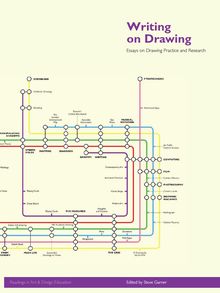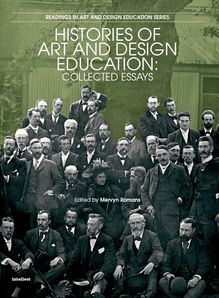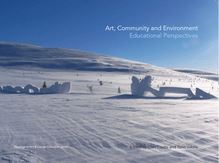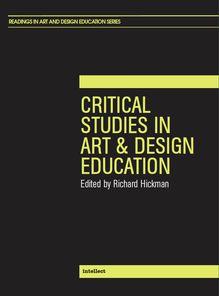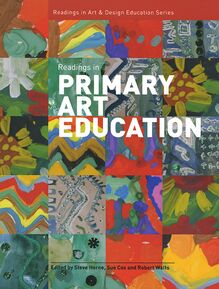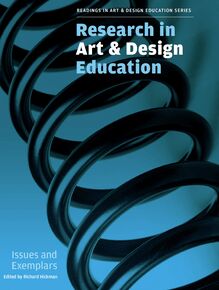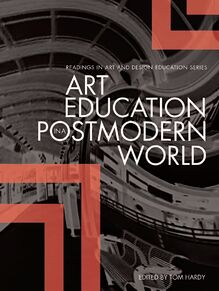-
 Univers
Univers
-
 Ebooks
Ebooks
-
 Livres audio
Livres audio
-
 Presse
Presse
-
 Podcasts
Podcasts
-
 BD
BD
-
 Documents
Documents
-
- Cours
- Révisions
- Ressources pédagogiques
- Sciences de l’éducation
- Manuels scolaires
- Langues
- Travaux de classe
- Annales de BEP
- Etudes supérieures
- Maternelle et primaire
- Fiches de lecture
- Orientation scolaire
- Méthodologie
- Corrigés de devoir
- Annales d’examens et concours
- Annales du bac
- Annales du brevet
- Rapports de stage
La lecture à portée de main
Vous pourrez modifier la taille du texte de cet ouvrage
Découvre YouScribe en t'inscrivant gratuitement
Je m'inscrisDécouvre YouScribe en t'inscrivant gratuitement
Je m'inscrisEn savoir plus
Vous pourrez modifier la taille du texte de cet ouvrage
En savoir plus

Description
An increased public and academic interest in drawing and sketching, both traditional and digital, has allowed drawing research to emerge recently as a discipline in its own right. In light of this development, Writing on Drawing presents a collection of essays by leading artists and drawing researchers that reveal a provocative agenda for the field, analysing the latest work on creativity, education and thinking from a variety of perspectives. Writing on Drawing is a forward-looking text that provokes enquiry and shared understanding of contemporary drawing research and practice. An essential resource for artists, scientists, designers and engineers, this volume offers consolidation, discussion and guidance for a previously fragmented discipline.
Sujets
Informations
| Publié par | Intellect Books |
| Date de parution | 10 janvier 2008 |
| Nombre de lectures | 1 |
| EAN13 | 9781841502540 |
| Langue | English |
Informations légales : prix de location à la page 0,1000€. Cette information est donnée uniquement à titre indicatif conformément à la législation en vigueur.
Extrait
Writing on Drawing
Essays on Drawing Practice and Research
Writing on Drawing
Essays on Drawing Practice and Research
Edited by Steve Garner Series Editor: John Steers
First Published in the UK in 2008 by Intellect Books, The Mill, Parnall Road, Fishponds, Bristol, BS163JG, UK
First published in the USA in 2008 by Intellect Books, The University of Chicago Press, 1427 E.60th Street, Chicago, IL60637, USA
Copyright 2008 NSEAD
All rights reserved. No part of this publication may be reproduced, stored in a retrieval system, or transmitted, in any form or by any means, electronic, mechanical, photocopying, recording, or otherwise, without written permission.
Series: Readings in Art and Design Education Series Editor: John Steers
A catalogue record for this book is available from the British Library.
Cover Design: Gabriel Solomons Cover Image: Plan de Dessin, 1 st Edition: Autumn 2006. A drawing of the Bigger Picture of Drawing by Stephen Farthing. Graphics: Dennis Mariner. Copy Editor: Holly Spradling Indexer: Sue Vaughan Type setting: Mac Style, Beverley, E. Yorkshire
ISSN 1747-6208 ISBN978-1-84150-200-7 EISBN 978-1-84150-254-0
Printed and bound by Gutenberg Press, Malta.
C ONTENTS
Acknowledgements
Preface
Foreword - Re: Positioning Drawing
Anita Taylor
Introduction
Steve Garner
Chapter 1 Towards a Critical Discourse in Drawing Research
Steve Garner
Chapter 2 Nailing the Liminal: The Difficulties of Defining Drawing
Deanna Petherbridge
Chapter 3 Drawing Connections
Richard Talbot
Chapter 4 Looking at Drawing: Theoretical Distinctions and their Usefulness
Ernst van Alphen
Chapter 5 Pride, Prejudice and the Pencil
James Faure Walker
Chapter 6 Reappraising Young Children s Mark-making and Drawing
Angela Anning
Chapter 7 New Beginnings and Monstrous Births: Notes Towards an Appreciation of Ideational Drawing
Terry Rosenberg
Chapter 8 Embedded Drawing
Angela Eames
Chapter 9 Recording: And Questions of Accuracy
Stephen Farthing
Chapter 10 Drawing: Towards an Intelligence of Seeing
Howard Riley
Chapter 11 Digital Drawing, Graphic Storytelling and Visual Journalism
Anna Ursyn
Notes on Contributors
Index
A CKNOWLEDGEMENTS
The chapter by Angela Anning contains material first published in Anning, A. Ring, K. (2004) Making Sense of Children s Drawings , Buckingham: Open University Press. The material is reproduced with the kind permission of the Open University Press.
Use of the Lucebert image Zwevende Boer (Floating farmer) in Deanna Petherbridge s chapter by kind permission of Tony Swaanswijk-Lucebert and the Stedelijk Museum, Amsterdam.
Richard Talbot acknowledges the financial support of AHRC in this research and Newcastle University in paying DACS visual creators for the use of their artistic works.
Terry Rosenberg thanks John Rhys Newman for allowing access to his fictions and allowing a selection to reproduced.
Angela Eames acknowledges the time and enthusiasm of Michael Kidner in the research for her chapter.
Anna Ursyn thanks her students for the artwork used in her chapter.
Steve Garner
P REFACE
This book is the sixth in a planned series of anthologies dealing with a range of issues in art and design education. The previously published titles in the Intellect Readings in Art and Design Education series are:
Critical Studies In Art Design Education
Art Education in a Postmodern World
Histories of Art and Design Education
The Problem of Assessment in Art Design
Research in Art Design Education: Issues and Exemplars
Further titles are in preparation.
This book departs from the format of earlier books in the series where the source of chapters was predominantly papers originally published in the [ International] Journal of Art Design Education . The chapters of this book are all previously unpublished.
The National Society for Education in Art and Design is the leading national authority in the United Kingdom, combining professional association and trade union functions, which represents every facet of art, craft and design in education. Its authority is partly based upon a century-long concern for the subject, established contacts within government and local authority departments, and a breadth of membership drawn from every sector of education from the primary school to universities.
More information about the Society and its range of publications is available at www.nsead.org or from NSEAD, The Gatehouse, Corsham Court, Corsham, Wiltshire SN13 0BZ, United Kingdom. (Tel: +44 (0)1249 714825)
John Steers Series Editor
F OREWORD - R E : P OSITIONING D RAWING
Anita Taylor
Drawing is a central and pivotal activity to the work of many artists and designers, a touchstone and tool of creative exploration that informs visual discovery and enables the envisagement and development of perceptions and ideas. Often categorised as a lesser activity than the main artefact or product, or otherwise remaining an intimate element of art practice, drawing has often been withheld from public viewing and the discourse in the field has often been marred by romantic visions of what drawing could and should be and how it might or might not be taught. Despite this conjecture, drawing remains a significant and important activity to many, is extensively encouraged if not taught in education and remains an important means of creative development, exploration and achievement. With a history as long and extensive as the history of our culture, the act of drawing remains a primordial and fundamental means to translate, document, record and analyse the worlds we inhabit.
There are distinct ways in which drawing functions as it distinguishes and aids us in understanding our complex world. Through signs and symbols, by mapping and labelling our experience, it can also enable us to discover through seeing - either through our own experience of seeing, observing and recording or through the shared experience of looking at another s drawn record of an experience. Drawing may have a transitory and temporal relationship with the world or it may provide a record of lasting permanence. It may be propositional, preparatory, visionary, imaginative, associative, factual, generative, transformative or performative. Drawing as an investigative, transformative and generative tool for the realisation and transference of ideas is at its best when the means of making are harnessed to the realisation of ideas and concepts, when it is fit for purpose and inventive within its means.
To this end, the viewer of the work benefits from a capacity to interpret and read the drawing, and to bring their own experience and understanding of language and perception to each drawing they see, be it a measured objective or realist drawing, an invented scene of the imagination, a proposition for the three-dimensional realisation of a design, a decoration, a symbol, or a sketch of emergent ideas. This literacy or fluency in visual language needs to be ensured and to be developed, nurtured, enhanced and challenged as an equivalently important means of communication to the predominance of verbal and written communication in our educational systems and cultures.
Uses of drawing vary enormously, ranging from limbs marked with dotted lines and arrows indicating what is proposed to happen in the absence of spoken confirmation under anaesthetic in operating theatres to road-markings which define for us the rules and regulations of driving, to street-finders and ordnance survey maps which indicate the route and nature of journeys, road signs, underground maps, lines which tell us how to open packets, lines which define a football pitch, marks or signs which tell us what way up to store something, signs which declare poison, pictures which tell us what is being transported, the graphic language of advertising, product design information, safety guides in aircraft, cartoons in the newspaper, product branding, coats of arms, logos - in fact all those images that don t require verbal or written translation. These images and information-bearing signs transcend the barriers of different languages and enhance communication in an increasingly global world.
Images teased from raw materials, reveal the choices and decisions made when drawing, and consequently encapsulate and define the thinking process behind the act. The enduring history of adjustment and adaptation within drawings informs the reading of the final image; and through the act of drawing we are not only left a trace of the physical act but the trace of the thinking process, as images or marks are made manifest, and evidently expose decisions, indecisions and indiscretions of this thinking out loud . The touch or imprint of a mark reveals whether it was made at speed, slowly, angrily, with love, with force, tentatively, stuttering-ly , gently, or as a notation, by an individual, personally or through printed or animated reproduction. The materials used to make the marks, and the surface on which the marks are made also inform us, not just about the period and timescale in which a drawing was made but the intention at the outset and any modification of this intention as the drawing has progressed.
The range and growth of drawing initiatives can be seen as a significant and collective defence of drawing in all its pluralities. For example, the Jerwood Drawing Prize has been developed as a forum to test, evaluate and disseminate current drawing practice and to encompass and inform debates in education and in current practice. The array of exhibitions, projects, courses and organisations committed to research and practice in drawing in the United Kingdom has exponentially grown in number over the last decade. Having collectively raised the game and placed drawing back on the agenda - in schools, universities, in teaching and research, galleries and contemporary practices - perhaps it is time to re-evaluate the specific function of drawing a
-
 Univers
Univers
-
 Ebooks
Ebooks
-
 Livres audio
Livres audio
-
 Presse
Presse
-
 Podcasts
Podcasts
-
 BD
BD
-
 Documents
Documents
-
Jeunesse
-
Littérature
-
Ressources professionnelles
-
Santé et bien-être
-
Savoirs
-
Education
-
Loisirs et hobbies
-
Art, musique et cinéma
-
Actualité et débat de société
-
Jeunesse
-
Littérature
-
Ressources professionnelles
-
Santé et bien-être
-
Savoirs
-
Education
-
Loisirs et hobbies
-
Art, musique et cinéma
-
Actualité et débat de société
-
Actualités
-
Lifestyle
-
Presse jeunesse
-
Presse professionnelle
-
Pratique
-
Presse sportive
-
Presse internationale
-
Culture & Médias
-
Action et Aventures
-
Science-fiction et Fantasy
-
Société
-
Jeunesse
-
Littérature
-
Ressources professionnelles
-
Santé et bien-être
-
Savoirs
-
Education
-
Loisirs et hobbies
-
Art, musique et cinéma
-
Actualité et débat de société
- Cours
- Révisions
- Ressources pédagogiques
- Sciences de l’éducation
- Manuels scolaires
- Langues
- Travaux de classe
- Annales de BEP
- Etudes supérieures
- Maternelle et primaire
- Fiches de lecture
- Orientation scolaire
- Méthodologie
- Corrigés de devoir
- Annales d’examens et concours
- Annales du bac
- Annales du brevet
- Rapports de stage

